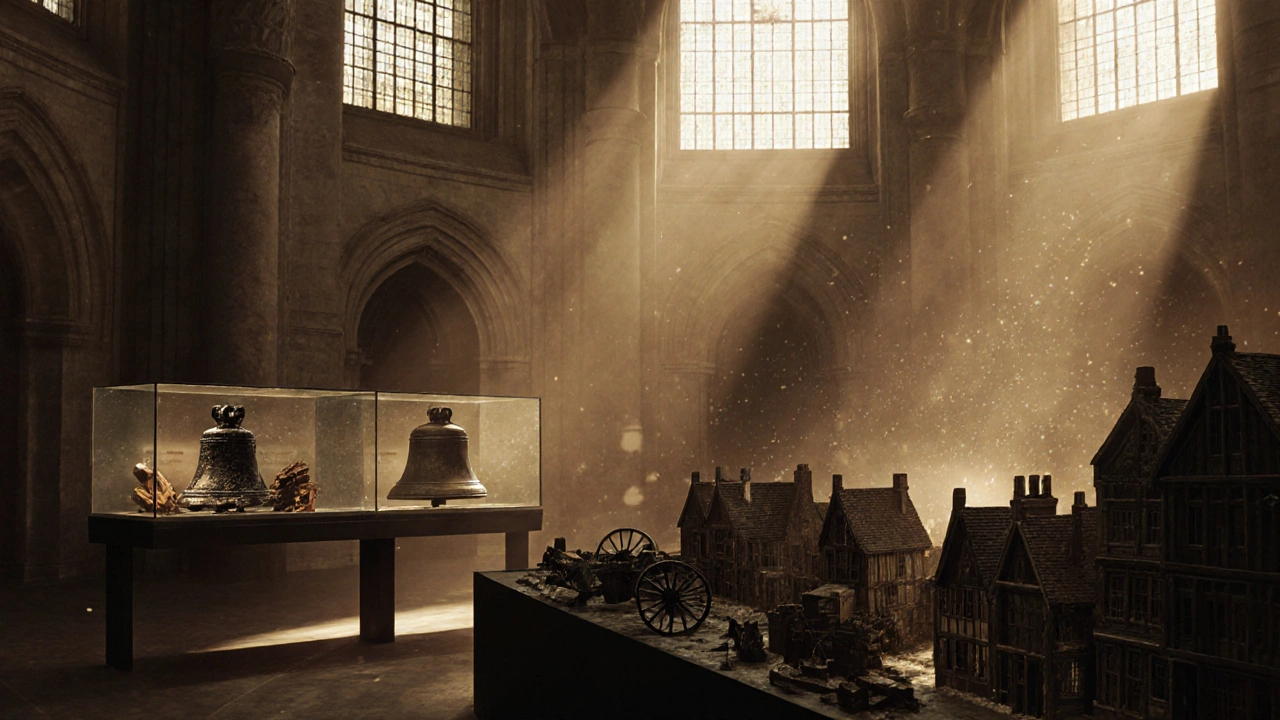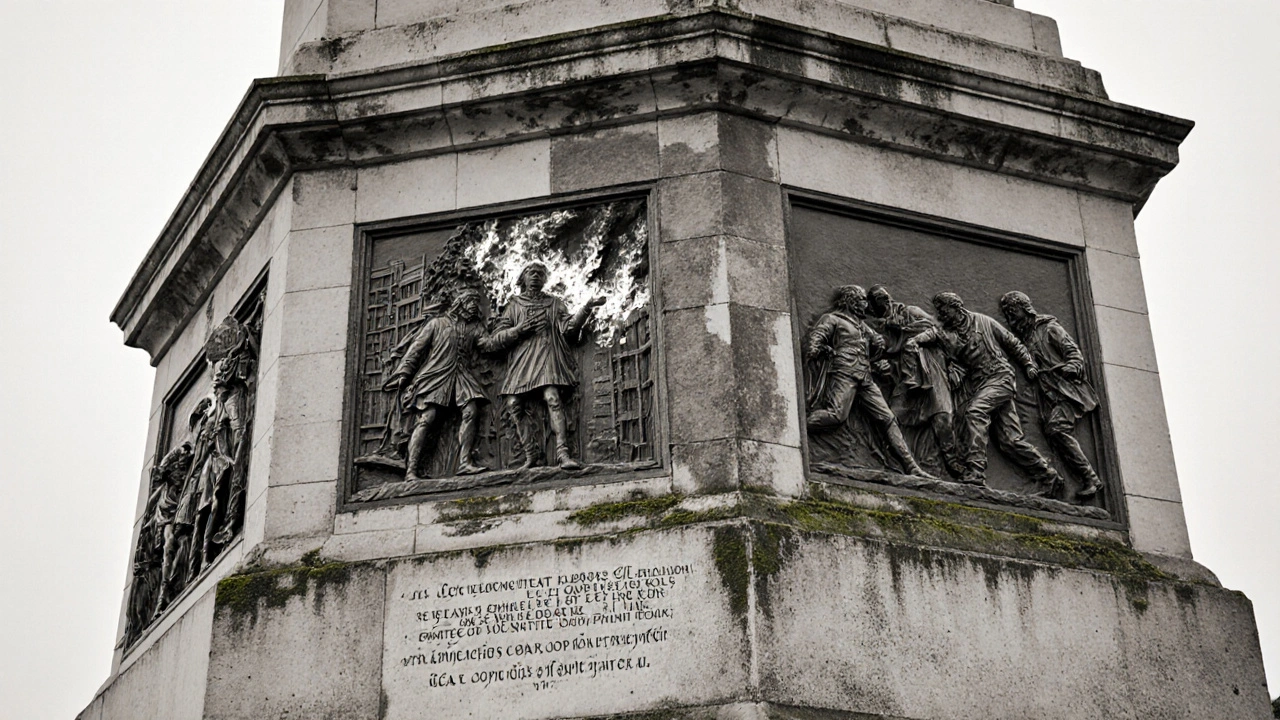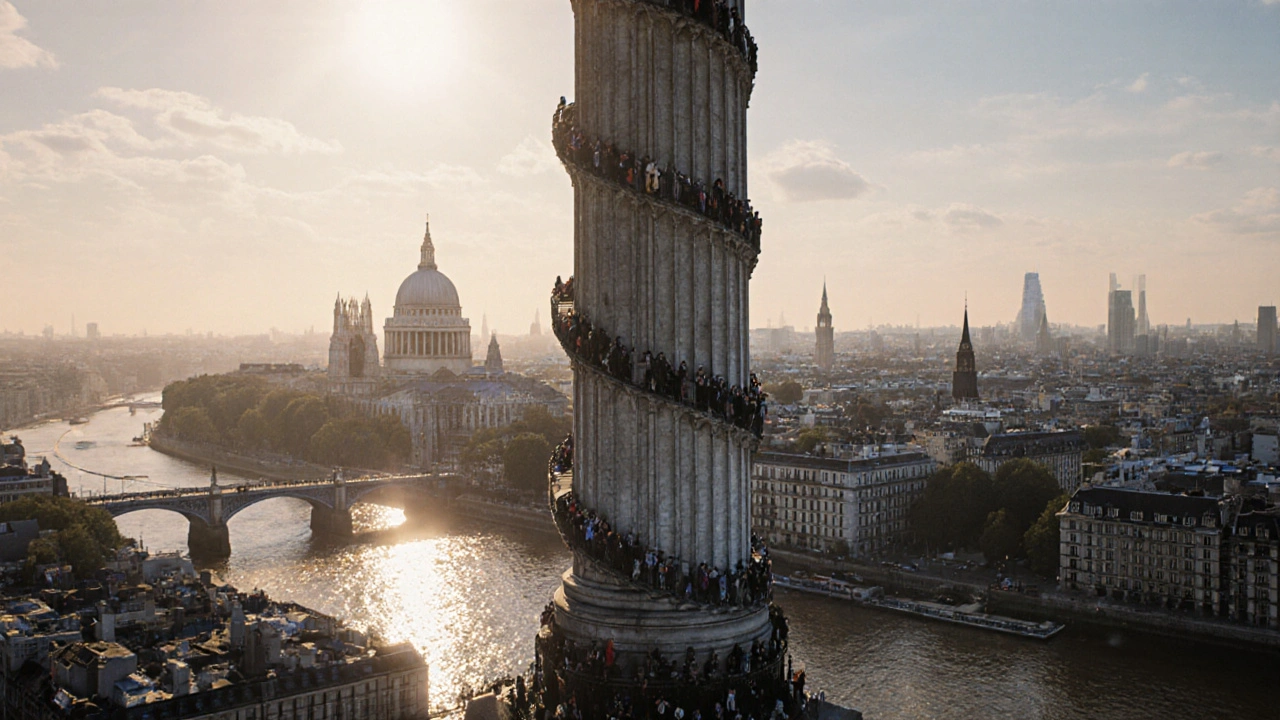The Monument to the Great Fire stands tall near London Bridge, not just as a memorial, but as a living piece of history you can actually climb. Built in 1677, it’s not just stone and steel-it’s a 202-foot-tall column that marks where the Great Fire of London started in 1666. And if you’ve ever wondered what the city looked like before skyscrapers, this is your best chance to see it.
Why Climb the Monument?
Most people walk past it without thinking twice. But if you’ve ever stood on a rooftop bar in Shoreditch and thought, “I wish I could see all of London from above”, the Monument gives you that view-without the price tag or the reservation. At 311 steps, it’s not a hike, but it’s enough to make you feel like you’ve earned the view. The reward? A 360-degree panorama that stretches from the Tower of London to St. Paul’s Cathedral, across the River Thames to the Shard, and all the way to the green hills of Southwark.
It’s not just a viewpoint. It’s a time machine. From the top, you can trace the path of the fire that burned for four days, destroying 13,200 houses and 87 churches. You’ll see where Pudding Lane used to be-the exact spot where Thomas Farriner’s bakery caught fire. The Monument doesn’t just tell you about the fire; it shows you how the city rose from the ashes.
History That’s Not Just in Books
The Monument was designed by Christopher Wren and Robert Hooke. Wren, of course, is famous for rebuilding St. Paul’s after the fire. Hooke? He was a scientist, an architect, and one of the first people to study gravity. Together, they built something that was both a memorial and a scientific instrument. Inside the column, there’s a hollow shaft that once held a pendulum for gravity experiments. That’s right-this isn’t just a monument. It was a lab.
The base has four bronze reliefs. One shows the fire raging. Another shows King Charles II ordering the city to be rebuilt. The third shows people fleeing with their belongings. The fourth? A Latin inscription that blames Catholics for starting the fire-a lie, spread to fuel anti-Catholic rage after the fire. The text was removed from public view in the 1830s, but you can still read it inside the museum at the bottom. It’s a reminder that history isn’t always told truthfully the first time.
What You’ll Find Inside
At the base, there’s a small but powerful museum. It’s free with your ticket to climb. You’ll see original artifacts: charred wood from the fire, a melted bell from a church, and a 17th-century fire engine that looked like a giant water pump on wheels. There’s a scale model of London before the fire, with narrow, crooked streets packed with wooden houses. Then there’s the after-wider streets, brick buildings, and the first real city planning in England.
One exhibit shows how the fire changed building laws. After 1666, no one could build with timber again. Houses had to have party walls, and chimneys had to be thick enough to prevent sparks. These rules became the foundation of modern urban safety codes. The Monument isn’t just about the past-it’s where modern London was born.

How to Visit: Practical Tips
You don’t need to plan far ahead. Tickets cost £10 for adults, £5 for children under 16, and are free for under-5s. You can buy them online or at the door. Lines are usually short unless it’s a weekend in summer.
- Wear comfortable shoes-those 311 steps are steep and narrow.
- Bring water. There’s no place to buy it inside.
- Go early or late. The light at sunset hits the Thames just right, and the crowds thin out.
- Bring a camera. The view from the top is better than any postcard.
- Check the weather. You won’t want to climb on a rainy day-the steps get slippery.
It’s open daily from 9:30 a.m. to 6 p.m. (until 5 p.m. in winter). The last entry is 45 minutes before closing. If you’re visiting in November, you’ll get the added bonus of fewer tourists and crisp, clear skies.
Who It’s For-and Who Should Skip It
This isn’t for everyone. If you have vertigo, claustrophobia, or mobility issues, you might want to skip the climb. The staircase is narrow, with no handrails on one side, and the steps are uneven. But if you’re curious, adventurous, or just love seeing cities from above, it’s one of London’s most underrated experiences.
It’s perfect for history lovers who want more than a plaque. For photographers chasing golden-hour light over the river. For families who want an active way to learn. For tourists tired of the same old sights-this is the hidden gem that locals know about.

What’s Nearby?
While you’re in the area, don’t miss the nearby sights. Walk 10 minutes to the Tower of London and see the Crown Jewels. Head to the Tate Modern for modern art. Or grab a coffee at Borough Market, just a five-minute walk away. The Monument sits right at the edge of the City of London, where medieval streets meet modern finance. You’re standing where bankers and blacksmiths once walked side by side.
There’s also a small plaque on the wall of the nearby church of St. Margaret Pattens that marks the fire’s origin point. It’s easy to miss, but if you’re the kind of person who likes tracing history on foot, it’s worth the detour.
Why This Matters Today
The Great Fire didn’t just destroy buildings-it changed how cities are built, governed, and protected. The Monument reminds us that disasters can lead to renewal. After the fire, London didn’t just rebuild. It improved. It became cleaner, safer, and more organized. That’s the real lesson here: destruction isn’t the end. It’s a chance to do better.
Today, as London faces new challenges-climate change, overcrowding, housing shortages-the Monument stands as proof that cities can adapt. It’s not just a relic. It’s a warning. And an inspiration.
Final Thought: More Than a View
When you reach the top, you won’t just see a skyline. You’ll see centuries of resilience. You’ll see how a city turned tragedy into transformation. And if you’re quiet for a moment, you might just hear the echoes of 1666-the crackle of flames, the shouts of people, the sound of a city being reborn.
How many steps are there to climb the Monument?
There are exactly 311 steps to reach the top of the Monument. The staircase is narrow and spiral, with uneven stone steps. It’s not wheelchair accessible, and not recommended for those with severe mobility issues or vertigo.
Is the Monument free to visit?
No, there’s an entry fee. Adults pay £10, children (16 and under) pay £5, and under-5s enter free. The ticket includes access to the museum at the base, which features artifacts from the Great Fire and interactive displays about 17th-century London.
Can you see St. Paul’s Cathedral from the top?
Yes, you can see St. Paul’s Cathedral clearly from the top of the Monument. It’s about 200 meters away, and its dome stands out against the skyline. The two landmarks were designed to be seen together-Wren planned them as a visual pair, with the Monument marking the fire’s origin and St. Paul’s symbolizing the city’s rebirth.
Is the Monument open all year?
Yes, the Monument is open every day of the year. Hours change seasonally: 9:30 a.m. to 6 p.m. in summer, and 9:30 a.m. to 5 p.m. in winter. The last entry is 45 minutes before closing. It’s rarely closed except for extreme weather or special events.
What’s the best time of day to climb?
The best time is late afternoon, especially during golden hour. The light hits the River Thames and the buildings across the City, making for stunning photos. Early mornings are quieter and less crowded. Avoid midday on weekends if you want to skip the lines.
Is the Monument accessible for people with disabilities?
No, the Monument is not wheelchair accessible. The staircase has no elevator, and the steps are too narrow and steep for mobility aids. However, the museum at the base is accessible and offers tactile models and audio descriptions for visitors with visual impairments.
